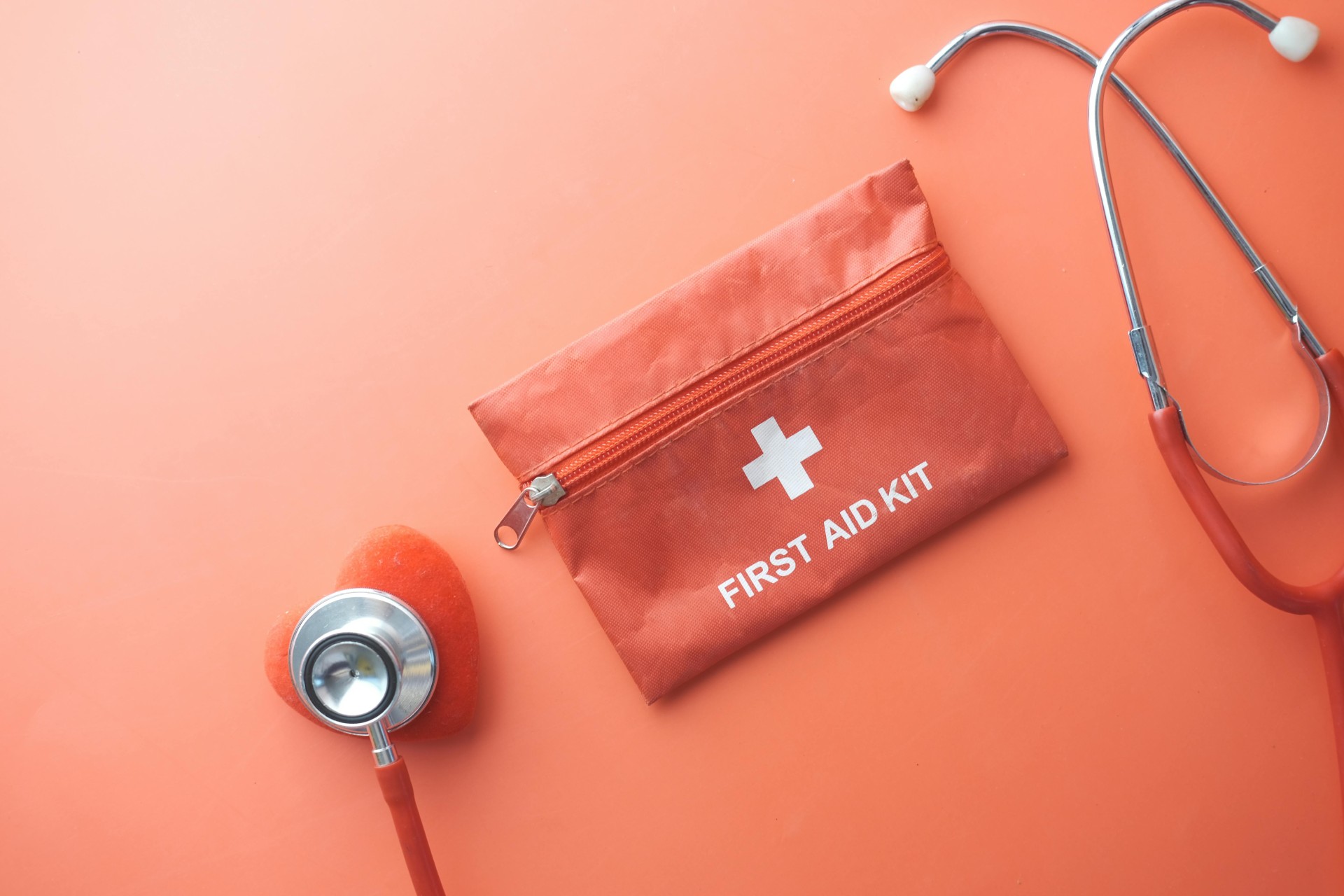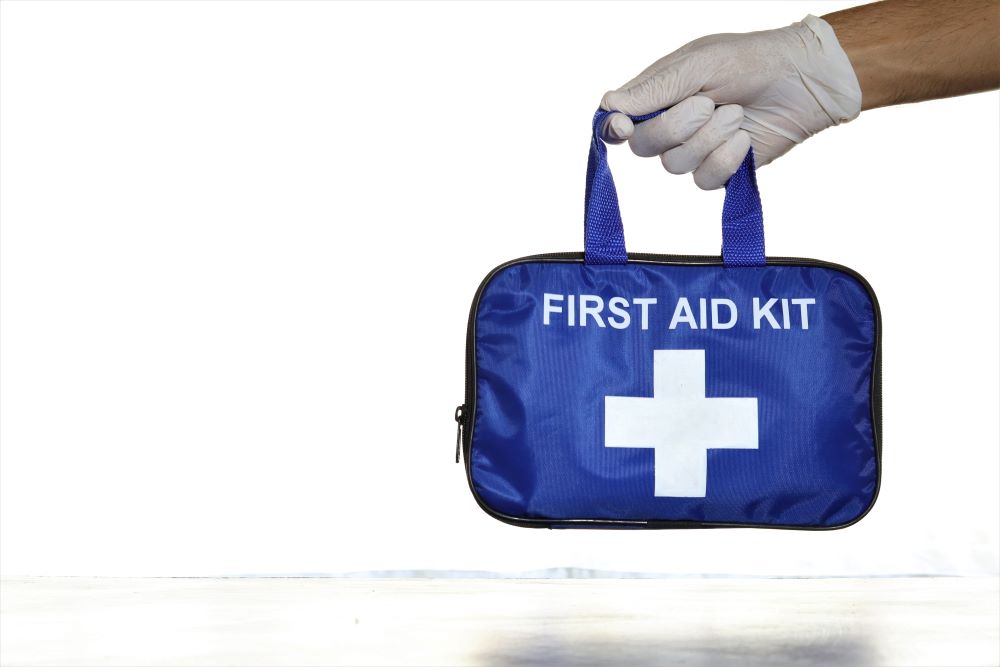Workplace first aid is one of the most crucial areas of health and safety at work. Without proper first aid provisions, arrangements, and training, emergency situations at work run the risk of causing real harm to your team, your customers, and your business.
However, there’s no need to panic – help is at hand. This guide to proper workplace first aid training covers everything you need to mitigate risks and deal with potential issues swiftly and effectively through proper, certified teaching.
What Is Workplace First Aid Training?
First aid training courses teach employers how to give basic medical care, covering all kinds of emergency situations from managing shock, to tending to wounds, to performing CPR.
There are two main types of workplace first aid courses:
- First aid at work: This covers more basic training suitable for small or low-risk working environments.
- Emergency first aid at work: This is designed for larger or higher-risk working environments, and will cover a more extensive range of emergency situations.
The type of training an employee needs will depend on the nature of their work, taking into account factors such as the amount of employees within a team, the level of risk of hazards in the workplace, and the people employees will be interacting with while at work, such as customers.
How Long Does A First Aid Training Certificate Last For?
In most cases, a first aid training certificate will last three years within the UK. Once those three years are up, employees must have a refresher course in order to gain a new certificate.
You might be wondering why a first aid certificate expires in the first place. The answer is that, with any luck, the skills an employee gains through first aid training will rarely have to be used, such as CPR or tending to serious injuries. Because of this, regular refresher courses are crucial in order to keep those skills fresh in an employee’s mind, should they ever have to suddenly utilise them. The HSE (Health & Safety Executive) even recommends employees take an annual refresher course to remain as prepared as possible.
Do Employers Have To Provide First Aid Training?
It is necessary for employers of any and every kind to make appropriate first aid arrangements for their workplace. The nature of these arrangements will differ depending on the nature of the work; employers can complete a safety risk assessment in order to navigate what they need to put in place, whether that’s just a basic first aid kit and an appointed first-aider, or a company-wide first aid training program with regular, scheduled refresher courses.
As a minimum legal requirement, the HSE states that employers must do the following:
- Provide a suitably stocked first aid kit. This will contain all the basic items necessary for low-risk workplace environments, plus any extra items deemed necessary by the employer’s risk assessment.
- Appoint a person to take charge of first aid arrangements. This is someone who will take the reins during emergencies – it will be their responsibility to, for example, call an ambulance if needed. It’s important to note these people are not ‘first-aiders’, in the sense that they don’t hold a first aid certificate.
- Provide all employees with details of the first aid arrangements. This means ensuring each member of the workforce is aware of where the first aid kit is, who to turn to in cases of emergencies, and who is a certified first-aider.
What Is A First Aid Needs Assessment?
This is the risk assessment that all facets of workplace first aid depend upon – without a proper assessment, employers won’t have the information they need to take necessary action, such as buying particular first aid supplies, or providing first aid training to employees.
A first aid needs assessment takes into account:
- The nature of the work.
- The nature of the workforce (for example the average age, the amount of people, etc).
- The distribution of the workforce.
- The work patterns of the workforce.
- Any workplace hazards and risks.
- Any known holidays or absences of appointed persons and first-aiders.
- The history of accidents within the workplace.
- Whether any employees work remotely, or alone.
- The distance of the workplace from emergency medical service sites.
- First aid provision for non-employees (for example customers or other members of the public).
What Are The Employee’s Responsibilities Regarding First Aid?
Employers should always be made aware of any potential problems or issues an employee has relating to their health, as these need to be taken into consideration when completing a first aid needs assessment; an employer might need to make certain provisions to support these employees in emergencies.
What Should Legally Be In A First Aid Kit?
The HSE urges that first aid kits must be readily available in each and every workplace, with easy access to the kit should an employee of any given level need it in an emergency.
The contents of a first aid kit will differ depending on the workplace’s first aid needs assessment. Higher-risk environments might require things that smaller, lower-risk zones won’t. However, as a rule of thumb, the HSE recommends the following items as a minimum for a basic first aid kit:
- A leaflet outlining general guidance on first aid.
- Sterile eye pads.
- Safety pins.
- Disposable gloves.
- Individually wrapped sterile plasters of varying sizes.
- Individually wrapped triangular bandages, preferably sterile.
- Medium and large-sized sterile, individually wrapped, unmedicated wound dressings.
It’s important to maintain and replace the contents of a first aid kit regularly to avoid situations where you might suddenly need something in an emergency, only to find you’ve run out. This also means checking the expiry dates of each item regularly, particularly sterile items, to make sure everything is still fit for purpose.
First aid training doesn’t have to be complicated. If you want professional help in ensuring you’re up-to-date and compliant with the latest first aid guidelines and requirements, feel free to get in touch with your local H&S Dept office today for more information about how we can help keep your team safe.



